All about gooseberries
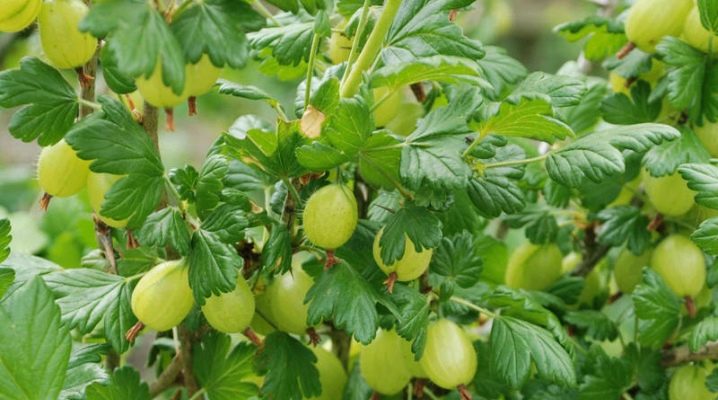
Gooseberry is one of the most common fruit crops... You can find it at every garden and summer cottage. In our review, we will take a closer look at this plant, its life forms, give a classification of the main representatives and talk about the rules of agricultural technology.
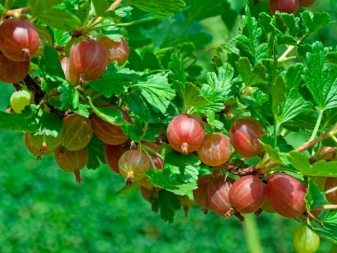
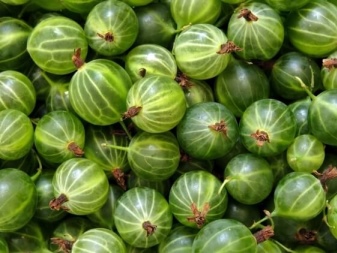
What it is?
The gooseberry family consists of two genera, which in total combine about 200 varieties.... This plant is most widespread in the mountains of Central and South America, as well as in the temperate climatic zones of the northern hemisphere. The main varieties of gooseberries include red, white, black and golden currants, as well as ordinary gooseberries - it is about him that will be discussed. The gooseberry genus unites about 50 varieties.
The common gooseberry is also called European and rejected. Belongs to the currant genus, Western Europe and the territories of North Africa are considered its homeland. In the wild in its natural habitat, it is found in the south of Europe, in Central Asia, in the Caucasus, in North America. A botanical description of the structure of the forest gooseberry was given by the scientist Jean Ruel back in 1536 - it was then that it became widespread in Europe.
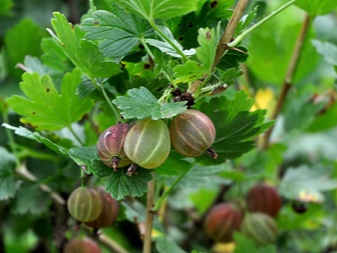
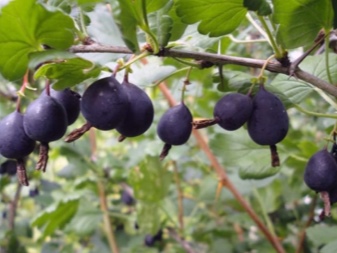
By the 17th century, gooseberries had become one of the most popular cultures in the countries of the Old World; they were especially widespread in England and were even considered an unofficial symbol of this country.
This led to a surge in breeding activity, which resulted in the emergence of a large number of cultivated varieties of gooseberries. By the beginning of the 19th century, there were already several hundred of them. This baton was picked up by American scientists, they were able to achieve the breeding of hybrid types resistant to powdery mildew and some other fungal diseases. Nowadays, gooseberries are grown in almost all countries of the world.
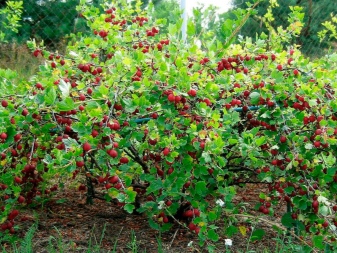
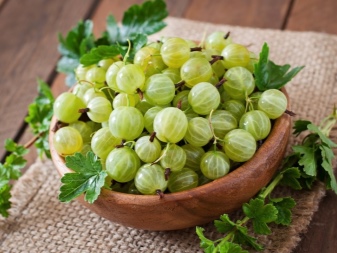
What does it look like and where does it grow?
Gooseberry is a small shrub that grows up to 1.2 m. It is distinguished by a gray-brown bark peeling from the stem, as well as thorns of leaf origin. Spiny needles are located on young shoots.
The leaves are petiolar, heart-shaped or ovoid, 5-6 cm long. Each leaf has 3 to 5 lobes, obtuse teeth are visible along the edge. The shades are dull.
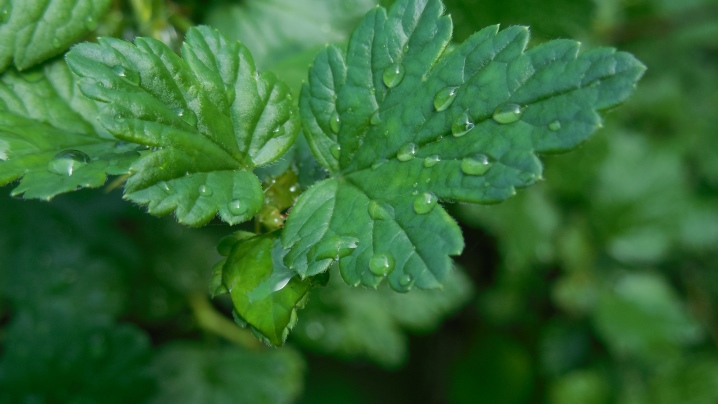
The plant is dicotyledonous, the flowers are greenish or reddish. In central Russia, flowering begins in May. The fruits are berries of a simple oval or spherical shape, the average length is 10-15 mm. Some varieties, under favorable conditions, can bear fruits up to 40 mm. The berries can be naked or covered with hard bristles; the venation of white, green, yellow or red is visually noticeable. Ripening occurs between June and August, depending on natural conditions.
Gooseberries have a sweet and sour taste, the pulp is juicy. They are distinguished by their exceptional usefulness - they contain valuable trace elements, tannins, vitamins A and C, as well as organic acids.
This is a self-fertile plant, so it will bear fruit even if only one bush grows on the entire site. Life expectancy reaches 15 years, the peak yield occurs at the age of 4-9 years.
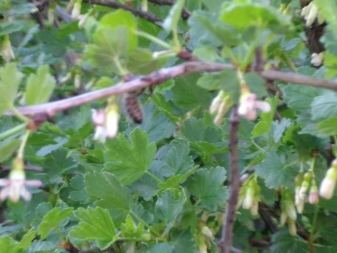
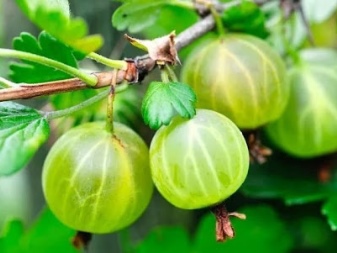
The most popular varieties include:
- Grossular - plentifully fruiting variety, the mass of one berry is 5-9 g.This gooseberry variety is characterized by resistance to fungal and bacterial diseases. The bush grows up to 1 m, tolerates frost well.
- Gingerbread man - shrub up to 1.5 m high, single thorns are located on the branches. The variety is large-fruited, the mass of one berry is 7-8 g. If all the rules of agricultural technology are observed, up to 7 kg of juicy tasty berries can be harvested from one bush. It is characterized by resistance to powdery mildew, average winter hardiness.
- Malachite - this variety allows you to collect up to 7 kg of harvest from each bush. Taste characteristics are high, fruits are sweet, with pronounced sourness.
- Russian - one of the earliest species of gooseberry, abundant fruiting. From one bush, you can collect 5-6 kg of fruit.
- Ural emerald - weakly spreading, medium-sized bush. The yield reaches 6 kg of fruits from one bush. Differs in high winter hardiness, adapted for growing in Siberia.
- Russian yellow - a medium-sized spreading bush, from each plant you can collect up to 4-5 kg of juicy sweet and sour berries. Suitable for growing in the Urals and in the northwestern parts of our country.
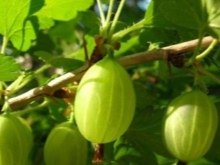
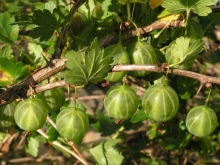
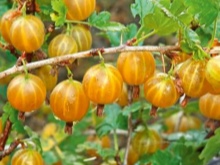
Landing
Despite the fact that the gooseberry is a relative of the black currant, it is more unpretentious to the soil. This culture adapts well to a variety of substrates - sandy loam, loamy, black earth, and even sandy and heavy clay. The plant cannot develop only in acidic, swampy, cold and highly podzolized lands.
However, in order to achieve maximum yields, It is best to plant gooseberries in loose, drained areas. Culture needs well-lit, ventilated places.
It is advisable to avoid lowlands and places with an elevated level of groundwater.
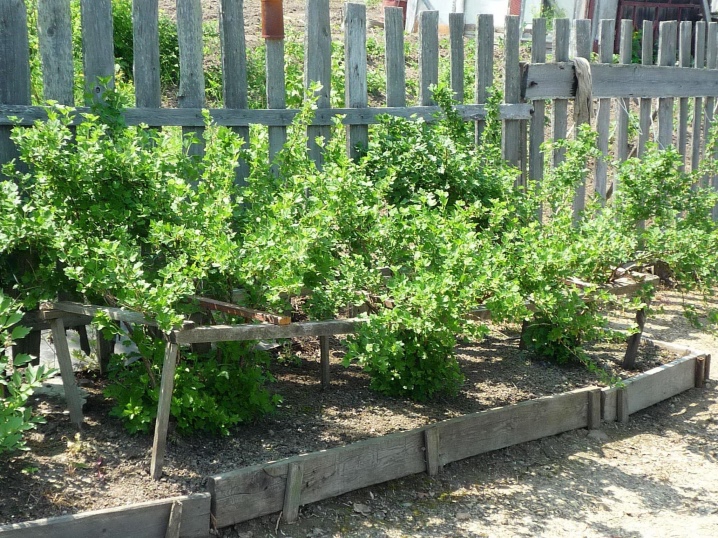
Timing
Most often, gooseberries are planted in autumn. This will allow the young bush to take root and root well for the winter. Planting is carried out in the second half of September and the first decade of October, depending on weather and climatic conditions. At the same time, it is important that at least a month remains before the first frost.
At a daytime temperature of 10-15 degrees, the roots actively deepen into the soil. If forecasters promise premature frosts, then it is better to postpone the planting of gooseberries until spring. Otherwise, the young plant will not have time to take root and will die in winter.
In spring, planting is carried out immediately after the snow melts. It is best to do this during a period when the earth warms up, but the sap flow has not yet begun. If you neglect the recommended timing, then the bush will be weak. In this case, you can not count on a good harvest.
As a rule, in warm southern regions, planting is carried out in March, in cold northern regions - in the second half of April.
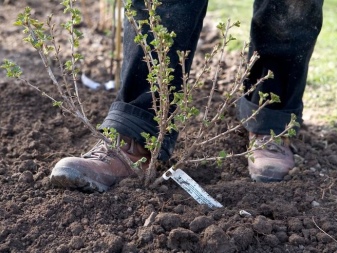
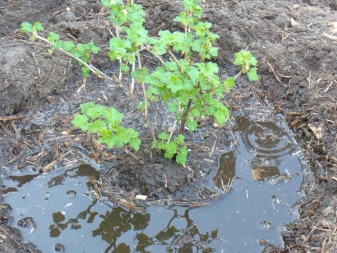
Technology
In order for a young seedling to adapt well to a new place, it must meet the following requirements:
- the root system must have at least three skeletal roots 20-30 cm long;
- in the aboveground part there should be at least 2-3 strong branches 30 cm long;
- seedlings should not contain traces of diseases, rot and mechanical damage.
When choosing plants with an open root system, preference should be given to seedlings without leaves (except for the top). When choosing a bush with closed roots, on the contrary, the trunks should be leafy.
The soil should be slightly acidic or neutral. If the soil is acidic, before planting, it is necessary to add dolomite flour or limestone to it at the rate of 40 g per square meter. Before planting, the ground is thoroughly dug up, cleaned of weeds, disinfected with a solution of potassium permanganate and watered abundantly.
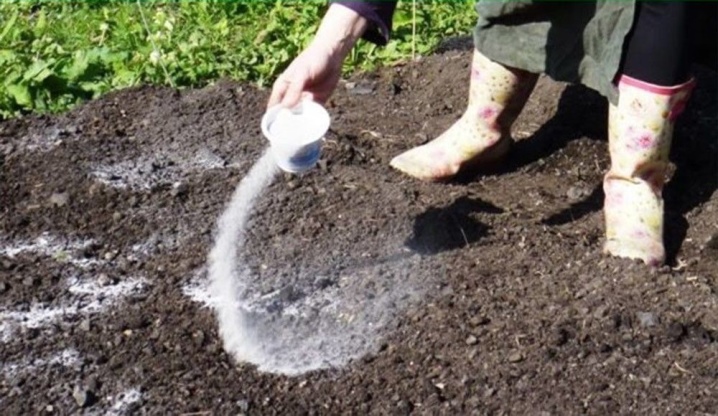
It is better to prepare the holes 2-3 weeks before planting - this will allow the earth to sink and avoid the appearance of air gaps. The optimal pit dimensions are 50 cm deep and 60 cm wide. Expanded clay or crushed stone should be placed at the bottom as drainage.
2⁄3 holes are covered with useful fertilizers, the greatest effect is given by a mixture of rotted manure, peat, ash and superphosphate.
When planting several plants, shape the planting holes so that the distance between them is at least 1 m.
Immediately before planting, the roots of the gooseberry should be kept in a solution of "Kornevin" or any other growth stimulator. Young seedlings are placed in the hole at a slight angle so that the root collar is located below ground level. During planting, it is necessary to properly straighten all the roots. The earth is covered in parts, each layer is lightly tamped. After that, it remains only to form earthen sides and pour a bucket of water under the young bush.

How to grow?
Caring for gooseberries is not particularly difficult.
Top dressing
Every spring, gooseberries must be fed with organic matter - this can be humus, manure or compost. It is laid in a near-trunk circle at the rate of 1 bucket of fertilizer per square meter and dug up. Work is performed at the stage of bud break. Additionally, 50-55 g of urea or ammonium nitrate, as well as 20-30 g of fertilizers containing potassium and phosphorus, are applied under each shrub.
At the stage of ovary formation, the plantation must be spilled with slurry or solutions of ready-made mineral fertilizers - nitrate or ammonium sulfate.
A good effect is given by a mixture of 4 kg of manure and 200 g of ash, diluted in a bucket of water... The resulting gruel is insisted for 5-7 hours, diluted with water twice and watered with bushes. The work is carried out in the evening or in cloudy weather, the earth must be pre-moistened. Top dressing is repeated after 1.5-2 weeks. In total, from the beginning of the growing season to the ripening of the fruit, the gooseberry requires 2-3 treatments.
During the fall months, nitrogen fertilization should be avoided. They stimulate vegetation, as a result, the plant will grow and die during the first frost. At this stage, it is better to add double superphosphate or potassium nitrate.
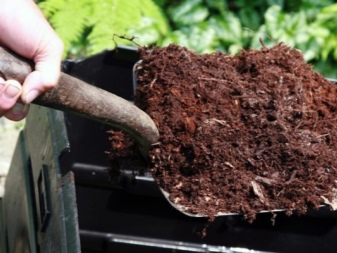
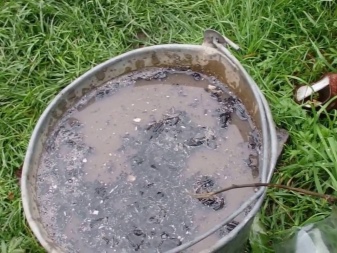
Pruning
The most important stage of agricultural technology is its pruning. In the first years of a young plant's life, it is aimed at forming a bush. To do this, perennial branches are shortened by half and the main part of the root growth is removed.
From the age of 4, pruning is used to eliminate thickening. At this stage, all abnormally growing, dry, weakened and diseased shoots are completely cut out. The main part of the crop is formed on branches at the age of 3-6 years, so older shoots can be cut out without any fear.
Forming is carried out in early spring before bud break or in autumn after shedding the leaves. Some gardeners practice pruning green shoots in the summer. They cut off the top and leave 5-7 leaves on each branch.
It is believed that this method promotes the growth of larger fruits.
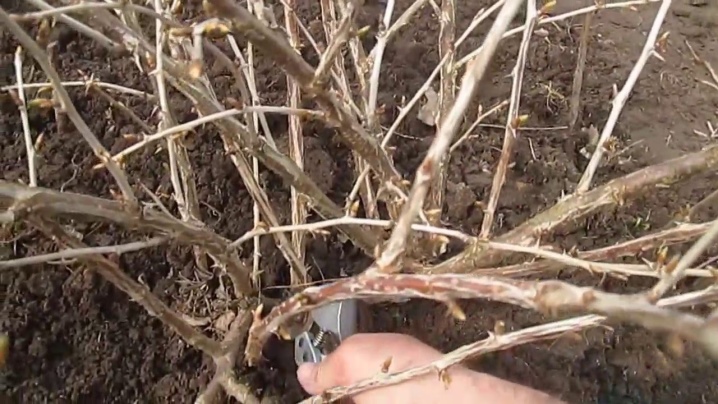
Watering
Gooseberries need moisture. Without sufficient moisture, the berries become smaller, their taste characteristics deteriorate and yield decreases. In dry weather, planting should be watered abundantly during the growth of young shoots and the formation of ovaries, as well as during the ripening period of berries. As soon as the fruits become soft, watering is paused so that the berries can collect the necessary sugar.
In October, it is necessary to perform abundant water-charging watering. To do this, 3-5 buckets of water are brought under each bush. This will allow the root system to better prepare for the winter frost. To retain this moisture, the plants in the near-stem zone are covered with mulch.
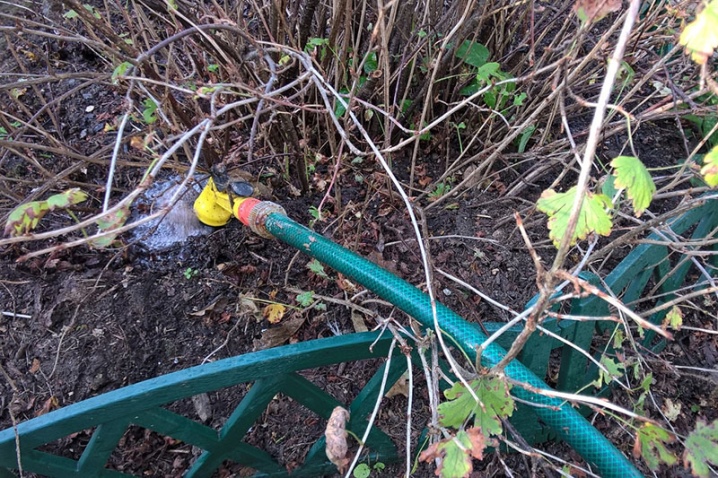
Diseases and pests
Fungal, bacterial and viral infections have the most damaging effects on crops. Most often, gooseberries are faced with the following diseases:
- Anthracnose - a fungal infection that affects not only gooseberries, but also raspberries, currants and some other crops. The spread of the fungus is facilitated by the thickening of the plantings and high humidity.The first signs of the disease are the appearance of brown spots on the leaves, followed by deformation of the leaves and their fall. To save the plant, it is sprayed with Bordeaux liquid or copper sulfate. At the flowering stage, 700 g of the drug is taken in a bucket of water. After the end of flowering, the dosage is reduced by 3 times.
- Septoriasis - this disease manifests itself in the form of brown spots. Over time, a brown border appears on their edges, the affected tissues brighten. Such plants require processing with Bordeaux liquid, copper sulfate or "Nitrafen". The greatest effect is given by prophylactic spraying before bud break.
- Spheroteka - better known as American powdery mildew. This is one of the most dangerous fungal infections, it manifests itself in the spring. Gooseberry leaves are covered with a mossy white bloom; if untreated, the shoots are bent and dry quickly.
- This mushroom hibernates not only on the leaves, but also on the shoots, so it is very difficult to get rid of it. You need to deal with it with Bordeaux liquid. In spring, as a preventive measure, the tops of the bushes should be spilled with hot water.
- Mosaic - a dangerous viral infection spread through insects. The first signs of infection are a yellow pattern on the veins. Soon the leaves become smaller, become deformed and the shoots stop growing. There is no cure for mosaics, so it is best to get rid of these bushes and burn them. To avoid misfortune, in early spring, even before the buds appear, it is advisable to spray the bush with insecticides.
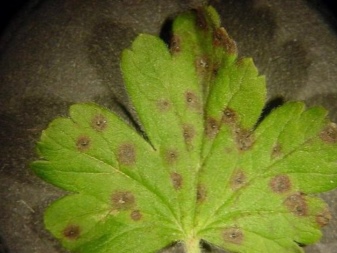
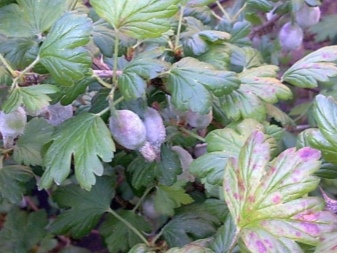
In addition to diseases, gooseberries can be threatened by insect pests.
- Currant glass - a small butterfly that resembles a wasp. On the branches of the gooseberry, she lays her eggs and after 10 days caterpillars appear from them. They penetrate directly into the core of the shoots and thereby disrupt all physiological processes in the green tissues of the plant. To fight the insect, it is necessary to regularly carry out sanitary pruning with the destruction of all affected fragments. In spring, before the start of sap flow, prophylactic treatment with Iskra M, Kemifos or Fufanon is recommended. At the stage of growth and ripening of berries, folk remedies help to fight against glassy - infusions of pungent-smelling herbs (tansy, wormwood or garlic).
- Fire - this butterfly makes clutches on the ovaries inside the inflorescences. Caterpillars emerging from eggs eat flowers and fruits in the shortest possible time. Already in mid-June, they transform into pupae and lie in the ground for wintering. At the first appearance of caterpillars, it is necessary to perform treatment with "Lepidocide" at the rate of 5-6 tablets per 1 liter of water. After 7-10 days, the treatment is repeated. A good result is given by the "Fufanon" solution, in addition to the fire, it at the same time neutralizes the sawflies.
- Sprout aphid - this parasite settles on the tops of young shoots in whole colonies, sucking out vital juices from them. To avoid damage, in early spring it is necessary to carry out preventive treatment with a solution of Bordeaux liquid. An infusion of wood ash works against aphids, with a strong volume of damage, the preparations "Aktara", "Rovikurt", "Fovatox" are used. However, they can be used only before the formation of ovaries.
- Gooseberry sawfly - this insect resembles a fly, it can have black, red or yellow shades. Makes laying on the leaves. All contaminated areas are subject to destruction and incineration. At the stage of bud opening and after flowering, it is necessary to manually collect the caterpillars, and then treat with insecticides. To prevent damage, during spring loosening, a mixture of ground pepper, dry mustard and ash, taken in equal proportions, can be added to the ground. To process 1 plant, you need 5 tbsp. l. raw materials.
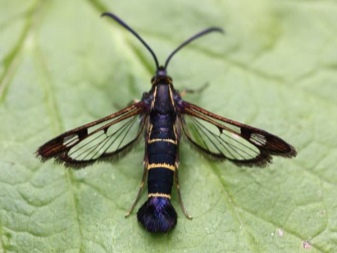

Harvesting
Gooseberry is a summer berry, therefore, fruits are usually harvested in July and early August.... The berries grow and ripen almost at the same time, usually fruiting takes the whole month. It should be noted that the berries do not crumble even when they are fully ripe. Up to 8 kg are harvested from one bush.
Gooseberries have two main stages of ripeness. The first - technical, comes 2 weeks earlier. In this case, the fruit grows to the maximum size typical of the cultivar, but remains green. On one of the sides, a yellowish or pink tint is allowed. The skin is tough, but enough sugars have already accumulated in the pulp.
Such berries are usually used to make stewed fruit, jam or preserves. Fruits at the stage of technical ripeness withstand transportation well, they do not crumple or crack on the way. However, you should not store them, expecting that they will reach final ripeness at home - after a few days they will begin to deteriorate.
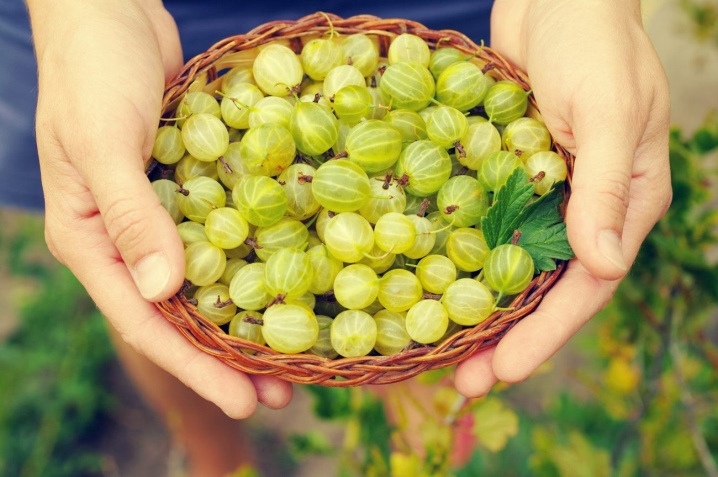
At the stage of full ripeness, the fruits acquire a characteristic varietal shade - yellowish, pink or purple. The berries become sweet and slightly softer. At this time, the taste characteristics of the fruit are extremely high, so ripe gooseberries can be eaten raw or grated. This berry can be canned, but it will not work to transport without damage to the harvest.
Everyone who has been involved in the collection of gooseberries knows how difficult it is. Even if you grow a bush without thorns, this does not mean that there are none. Most likely, the number of thorns is minimal, thorns are always present. Therefore, before picking berries, you need to take care of protection - it is advisable to use garden gloves and wear long sleeves.
Collect the berries one at a time. Of course, this will slow down the harvesting process. But the skin will remain intact.

Use in landscape design
Gooseberry bushes are often used in landscaping. They are undemanding to care for and are very beautiful. Most often, the culture is included in the tapeworm. In this case, the bushes are planted on lawns or lawns one by one, which allows you to add a touch of variety to the landscape and get rid of monotony.
Gooseberries make a good hedge. True, it is better to use it exclusively for internal zoning. Do not use gooseberries to fence off the road side. Curbs can be formed from low-growing species, in which case the plant will need a regular haircut.
Gooseberries are widely used to create decorative compositions together with flowers. In addition, shrubs are often used to mask communications - wells, pipes and storage areas for building materials.
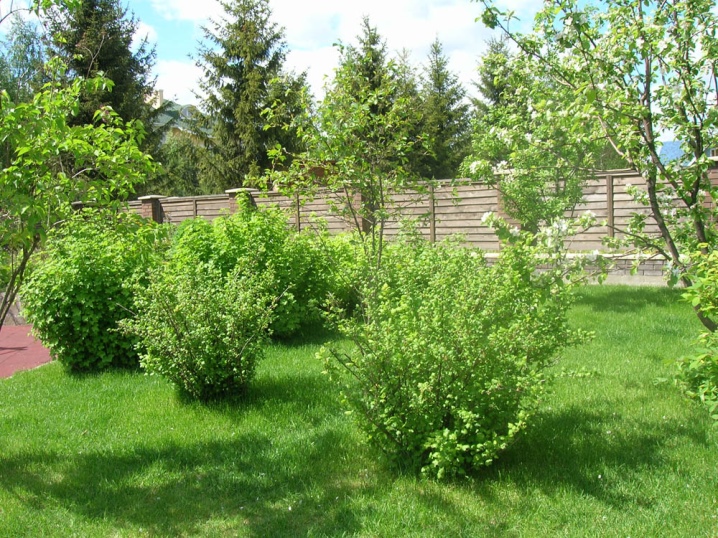





The comment was sent successfully.